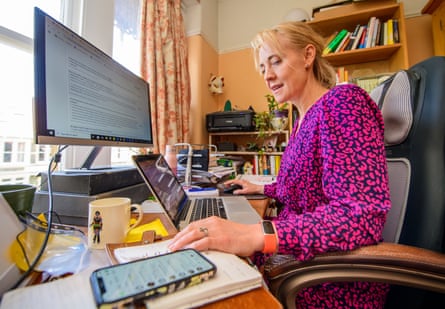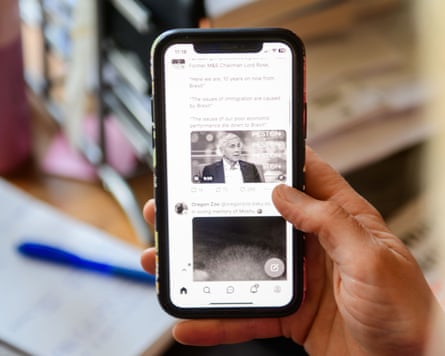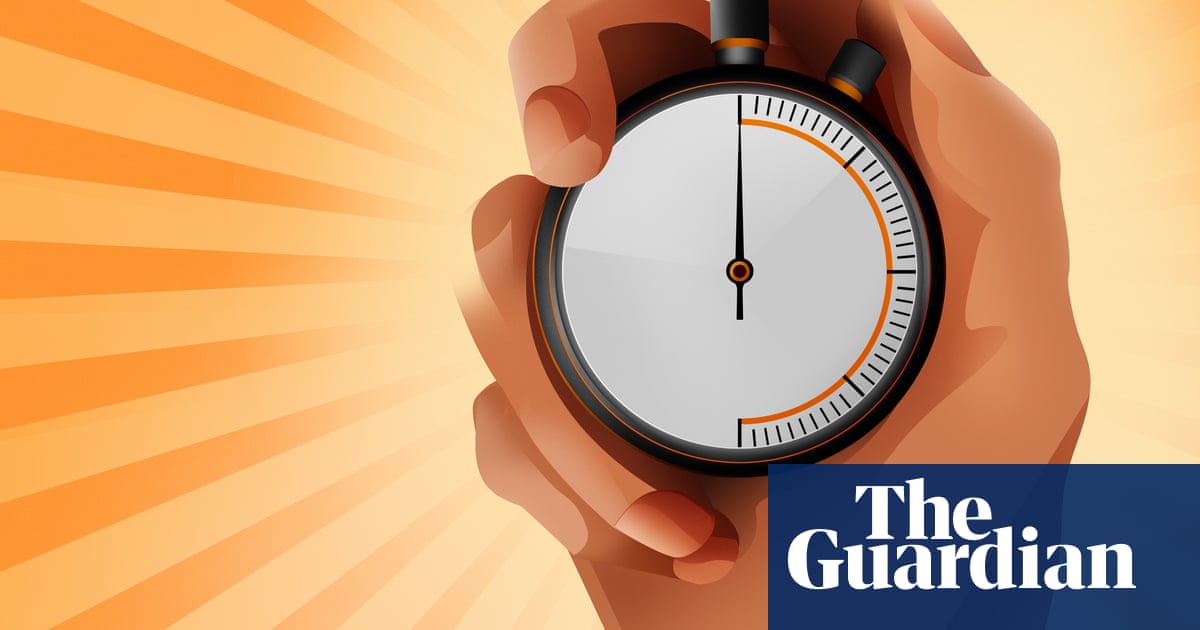Can you count the number of times you’ve looked at your phone today? Or how often you’ve opened it to do one thing to find yourself doing something else entirely?
If you’re anything like me, you’ll have little idea – merely an inkling – that it’s more times than you’d hope. Smartphone algorithms are designed to capture our attention and hold it, but a new book written by an academic who studies them promises to help people take back control.
I spent a week putting some of her suggestions to the test.
A first step towards breaking any addiction is acknowledging you have one and understanding its nature. In her book, Smartphone Nation, Dr Kaitlyn Regehr suggests keeping a “phone fed journal” for a few days, noting what you opened your phone to do, where you ended up, how long you spent there, and how the session made you feel.
Trying to keep track of the minutes I’m spending on phone-based diversions proves tricky, as I’m often unaware I’m even being diverted. With practice though, I think I’m beginning to notice this more quickly, and it’s apparent that my problematic phone use falls into two general categories.
The first, which I’ve named “deliberate procrastination”, happens when I’ve got a mentally taxing task ahead of me, and I don’t want to do it, so I check my apps for updates instead.
According to my diary, I am a master task-avoider, particularly when tired. Or perhaps I’m just saddled with too many mentally taxing tasks. But since I appear more prone to procrastinating in the mornings, it strikes me that a quick fix could be moving more challenging tasks to later in the day, when I’m more awake.

The second and more worrying habit I’ve identified, I’ve christened the “oblivion vortex”: where I open my phone to do something, only to come round goodness knows how many minutes later, to find myself watching some random video, with no idea how I got there.
Reader: beware the treacherous 30 minutes after waking! Last Tuesday, while intending to prepare school snacks and rally teenagers out of the door, I emerged from the vortex to find the beauty entrepreneur Trinny Woodall telling me about a recent trip to the hairdresser to get her highlights done.
According to Regehr, an associate professor of digital humanities at University College London, this is classic algorithm skulduggery.
“This technology wants to seamlessly move you off one task and on to another application, then hold you there for as long as possible. That’s what advertisers are paying for: your attention. However, what’s great is that this week, you became aware that it is happening.”
Mindless scrolling isn’t always harmful, Regehr adds. “Sometimes we need a break,” though she encourages reflecting on how that content makes you feel.
I admit that some of my feeds leave me feeling inadequate or that I’m missing out – while they’re littered with ads for intermittent fasting and eye creams, clearly tailored to my age and search habits.
Regehr suggests unfollowing individuals or brands that no longer inspire or educate me, and narrowing in on things that do.
“You might decide: ‘I do want that soothing scroll, but I’d like to be more active about what I fill that break with.’ You don’t just have to take what algorithms feed you.”

It’s sage advice, but that digital spring clean will have to wait until I’m less busy. For now, I try another of her tips: switching my phone to greyscale by removing colour via the accessibility settings.
Dr Alex Taylor, a lecturer in marketing at Newcastle Business School in Australia who studies smartphone distraction, supports this: “One of the most obvious reasons smartphones compete for our attention is the level of stimulation they provide. Minimising this by limiting exposure to high fidelity imagery is a good step.”
Indeed, without the usual candy-coloured icons winking seductively at me from my screen, I struggle to find apps. The pull is lessened – out of sight really does mean out of mind. Still, when I actually need to use my phone, the palette makes navigation frustrating. It’s a useful, if imperfect, deterrent.
Despite efforts to monitor my smartphone use, I also suspect I’m only capturing a fraction of the distractions I experience.
after newsletter promotion
Dr Maxi Heitmayer, a human-computer interaction researcher at the London School of Economics, shares this view. In one study, he equipped 41 participants with wearable cameras to observe when they checked their phones without unlocking them. These quick checks, though seemingly minor, are disruptive nonetheless.
“We found that whenever there’s this little break in an activity – it could be turning the page of a book, or you’re done cutting the tomatoes and now you need to chop the onions – that’s when the phone comes in,” Heitmayer says.
Breaking this pattern isn’t simple. In a more recent study, Heitmayer found that moving phones out of reach did reduce use – but often led people to shift their distractions to desktop screens instead.
He suggests leaving my phone in a different room, and noting each time I think about checking it. The answer is frequently – to check for messages, Google random thoughts, or open apps out of sheer habit.
And our phones are undeniably useful. On the second day of stashing my phone upstairs, I miss a call from my daughter’s school about her lunch account. When I finally receive this message, I immediately open an app and deposit some money – though I get so irritated by the greyscale that I turn it off.
Even so, my digital detox has made me more mindful of how I interact with my smartphone. Since starting my diary, I’ve found myself sucked into the oblivion vortex less frequently, and though I’m still guilty of procrastination, I aspire to fill these deliberate breaks with apps and feeds that bring me joy.
Still, this mini digital detox has made me more aware of how I use my phone and I’m starting to swap aimless browsing with more intentional use – choosing apps that spark joy rather than just steal time.
Regehr and her team have proposed a hierarchical approach to digital engagement, similar to a healthy eating pyramid: nutritious habits at the base, indulgent treats at the top. For her, a scroll through second-hand clothing app Vinted is the digital equivalent of a cupcake.
I’m not perfect, but I’m learning to reshape my phone habits – and yes, the occasional Trinny Woodall video is allowed, so long as I’ve chosen to watch it.
Tips for a healthy digital diet
Building a healthier relationship with your smartphone doesn’t necessarily mean going cold turkey or tossing your device into a drawer. Instead, it’s about subtle shifts that return a sense of control. Dr Kaitlyn Regehr suggests the following strategies:
-
Set app limits for your most-used platforms – not just mentally, but through your phone’s settings.
-
Reclaim your attention by asking: Who do I really want to hear from? Then silence the rest. Turn off unnecessary push notifications, and consider assigning different ringtones to different contacts.
-
Temptation can also be engineered away by moving social media apps off your main screen – or deleting them entirely, so you can only access them via a browser.
-
Try greyscaling your phone: Without vibrant colours tugging at your attention, you might find that the allure of Instagram or TikTok fades a little.
-
Reduce targeted advertising by using different browsers for shopping and chatting, or turn on incognito mode to avoid cookie tracking.
-
Create real-world boundaries by setting screen-free zones and times, such as a no-phones-at-the-table rule, or a digital curfew before bed.
Smartphone Nation by Kaitlyn Regehr (Pan Macmillan, £22). To support the Guardian, order your copy at guardianbookshop.com. Delivery charges may apply

.png) 4 hours ago
4
4 hours ago
4

















































